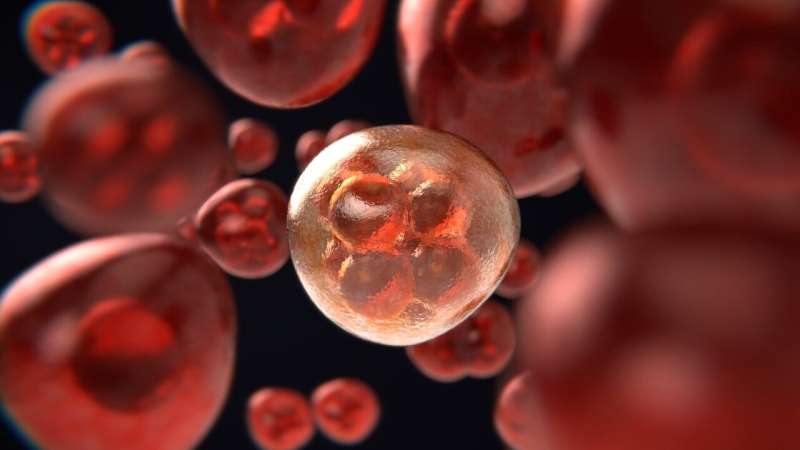
St. Jude Children’s Research Hospital scientists have identified a new strategy that takes advantage of an unexpected regulator of inflammatory cell death to shrink tumors in mice. The study appeared today in Cell Reports.
One key hallmark of cancer is the ability of tumor cells to resist cell death. In her research, Thirumala-Devi Kanneganti, Ph.D., St. Jude Department of Immunology, has focused on understanding how innate immunity and the ability of cells to sense danger and induce inflammatory cell death could be harnessed to fight cancer and other diseases.
This study focused on the innate immune sensor ZBP1 and the related protein ADAR1. The research revealed a previously unknown interaction between the molecules that regulate inflammatory cell death and tumor growth. Investigators showed that combination therapy with interferon-γ and the drug KPT-330 disrupted the ADAR1-ZBP1 interaction. The treatment was also associated with a dramatic regression of tumors in mice.
“The findings are a breakthrough in cancer treatment and underscore the importance of understanding how innate immunity regulates cell death pathways through the interplay between ADAR1 and ZBP1,” said Kanneganti, the study’s corresponding author. “Understanding these interactions is key to developing new treatments for a wide range of diseases, including cancer, as well as inflammatory and infectious diseases.”
Two proteins with a unique structural characteristic
ZBP1 is an innate immune sensor that activates an inflammatory cell death pathway that Kanneganti’s group identified as PANoptosis. PANoptosis integrates elements of other cell death pathways called pyroptosis, apoptosis and necroptosis. ADAR1’s function in cell death and PANoptosis was unclear, although mutations in the protein are associated with cancer and several autoimmune and autoinflammatory disorders.
ADAR1 and ZBP1 share a unique feature. The molecules are the only mammalian proteins with a Zα domain. Domains are distinct structural or functional units of proteins.
Researchers showed how ADAR1 worked through the shared Zα domains to bind to and suppress ZBP1 activity, stifle PANoptosis, and inhibit cell death. Deleting ADAR1 or sequestering the protein in the nucleus freed ZBP1 to trigger PANoptosis.
Melanoma growth and colorectal cancer were suppressed in mice with myeloid cells lacking ADAR1.
“The finding was unexpected,” said first author Rajendra Karki, Ph.D., of the Kanneganti laboratory. “Since the Zα domain of ZBP1 drives the cell death pathway, we expected the Zα domain to do the same in ADAR1, but it did the opposite and suppressed PANoptosis.”
Striking a balance to improve cancer therapy
The study also likely explains disappointing interferon results in previous cancer clinical trials and suggests alternate treatment strategies. Interferon induced expression of both ADAR1 and ZBP1, which researchers showed would suppress PANoptosis and tumor cell death.
But combining interferon with KPT-330, a nuclear export inhibitor, kept ADAR1 sequestered in the nucleus and out of the cytoplasm, where it normally interacts with ZBP1. That allowed ZBP1 to activate PANoptosis for tumor cell death. KPT-330 is part of a new class of drugs. In 2020, the U.S. Food and Drug Administration approved KPT-330 for treatment of certain patients with multiple myeloma and diffuse large B-cell lymphoma.
Source: Read Full Article